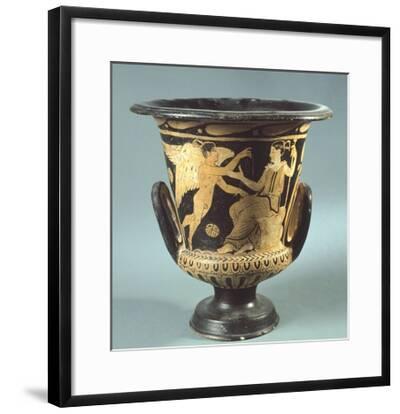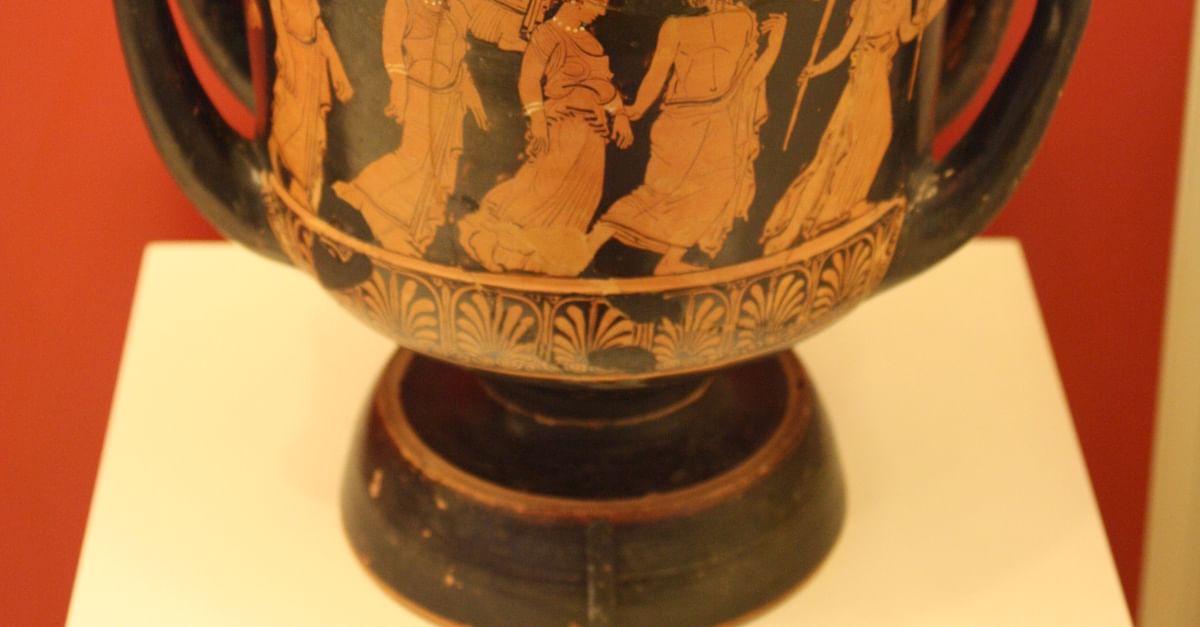
The Rape of Europa, whose name means "she with the wide eyes" or "she of the broad countenance" and after whom the continent of Europe is named, was a particularly popular subject in Attic vase-painting during the first quarter of the 5th c.

Penthesilea Painter (fl 470 BCE), Zeus, Ganymede and Penthesilea (c 470 BCE), Kylix, 15.5 x 36. Note the large eagle-like bird on Zeus’s staff, which is here an attribute. On the other side of the krater are three himation-clad youths in conversation. Some still painted scenes of the couple on Mount Olympus, as on this Attic red figure calyx krater from about 490-480 BCE. From her union with Zeus Europa gave birth to three sons, Rhadamanthys, Sarpedon and Minos. Title: Red-figure Kalix Krater Creator: Niobidi Painter Date Created: 460 BC -0460 Location: Comacchio - Valle Trebba Source: Tomb 313 Valle Trebba Registration number: 2891 Provenance: Spina Production place: Attic Physical Dimensions: w60 x h58 cm (Complete) Type: Kalix Krater Rights: Ministero per i Beni e le Attività Culturali. The winged Eros, who follows, hints at the passion that will draw the god and the mortal into their divine union at Gortyn on Crete, where the couple eventually landed. The princess, enchanted by this creature, mounted its back and she suddenly found herself flying over the sea, denoted here by the presence of fish.

Zeus, smitten by the beauty of Europa, daughter of the King of Phoenicia Agenor, transformed himself into a snow-white bull in order to seduce the young princess while she was picking flowers on the seashore. The subject on the main side of this Attic krater is the Rape of Europa.


 0 kommentar(er)
0 kommentar(er)
